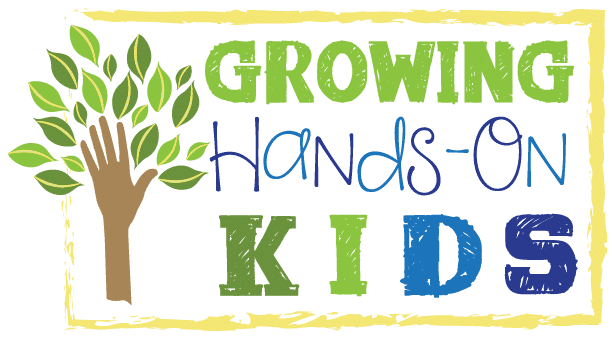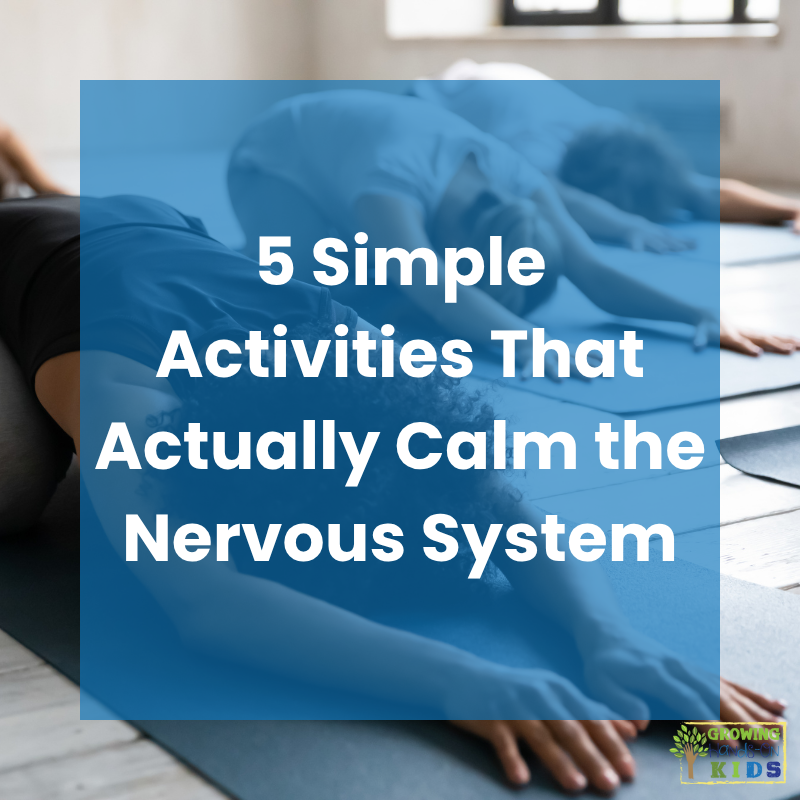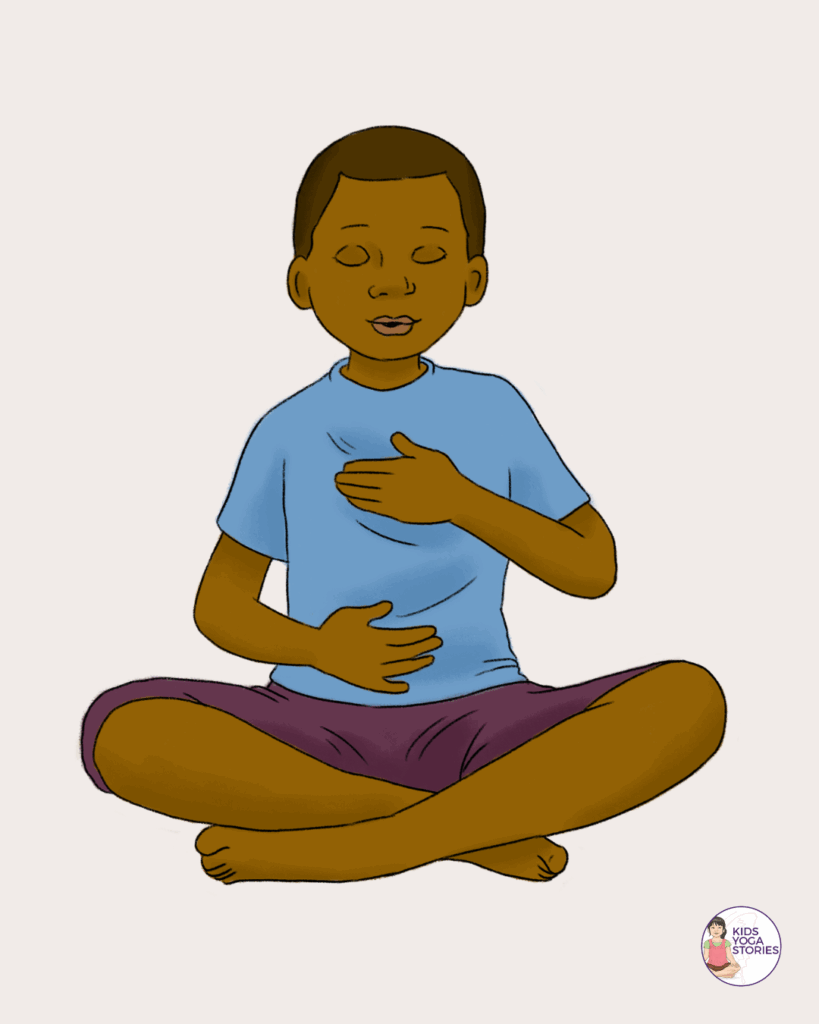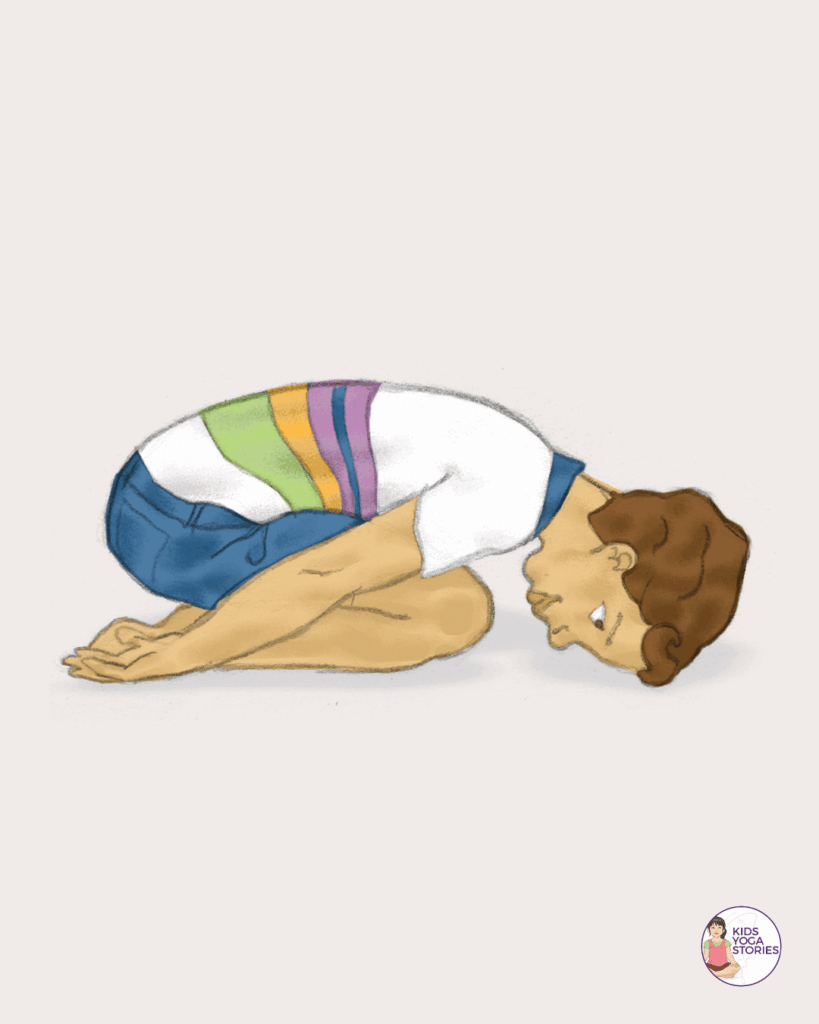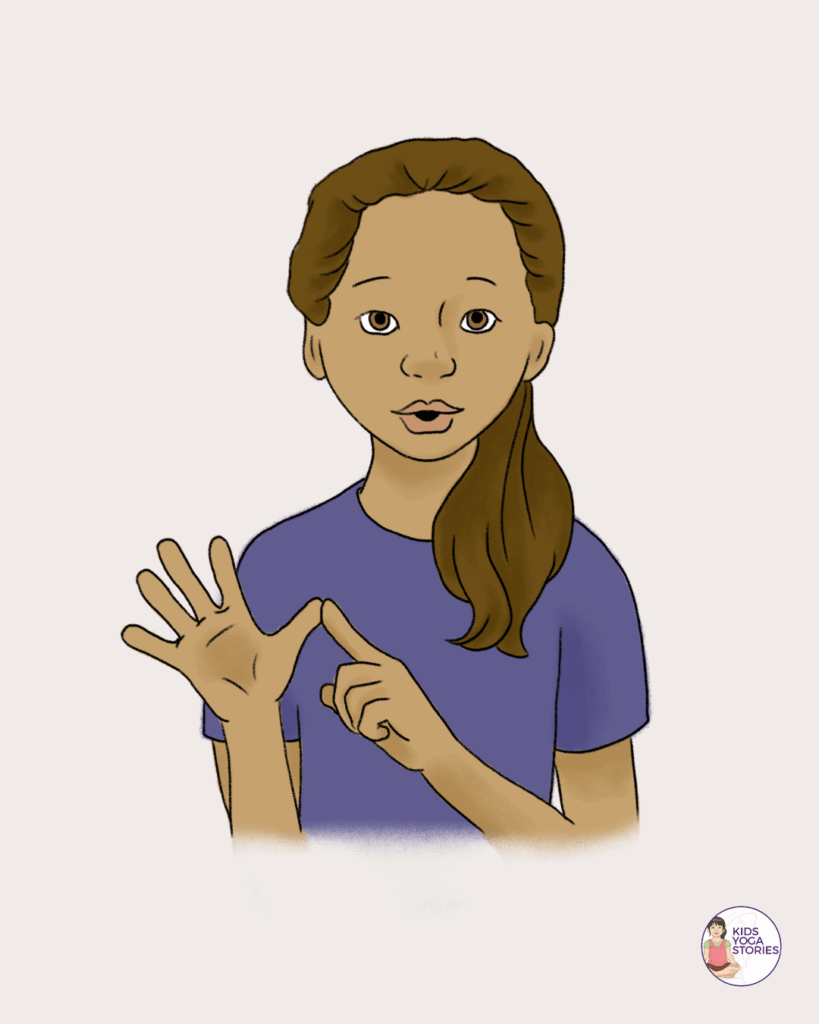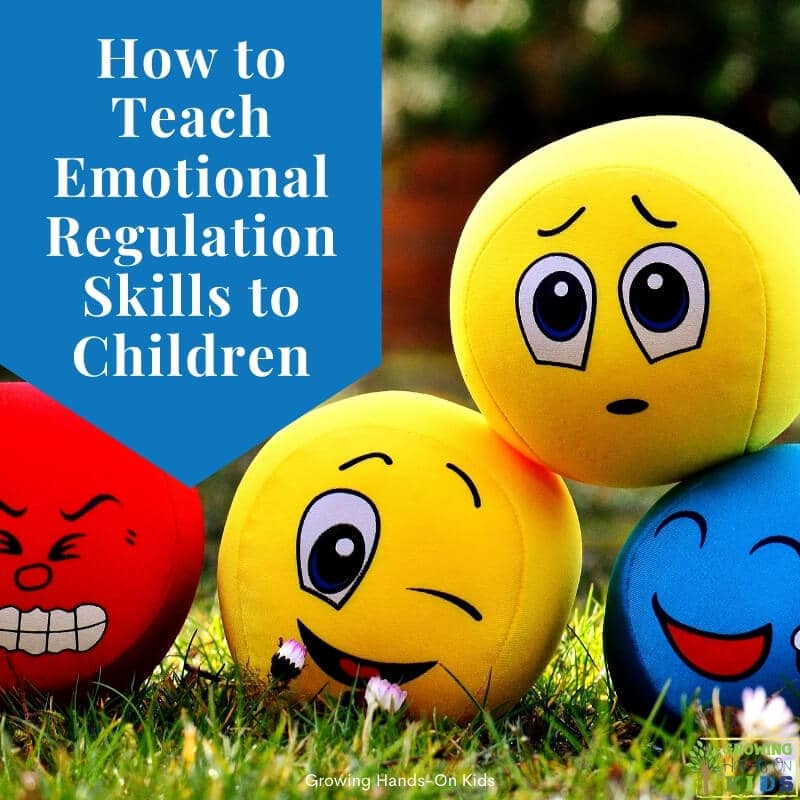5 Simple Activities That Actually Calm the Nervous System
Affiliate and Referral links are used below to promote products I love and recommend. I receive a commission on any purchases made through these links. Please see my disclosure policy for more details. As an Amazon Associate, I earn from qualifying purchases.
Today, I am welcoming Giselle from Kids' Yoga Stories to share The OT's Guide to Using Yoga for Emotional Regulation: 5 Simple Activities That Actually Calm the Nervous System. Thank you for sharing your expertise with us Giselle!
Occupational therapy became a regular part of my family's daily lives when my neurodivergent daughter began sessions. Sitting in those waiting rooms, I watched child after child walk through the doors carrying invisible loads—anxiety, dysregulation, and stress that seemed far too heavy for their small shoulders.
If you're an occupational therapist working with children who seem “stuck” in fight-or-flight mode, you're seeing this too, and you're not alone.
Through my work with Kids Yoga Stories, I've connected with countless occupational therapists in our community who share the same concern: these children need help finding calm, but where do you even start?
The good news is you don't need to reinvent your entire approach to help these children and to make a meaningful difference.
Simple yoga and mindfulness activities can integrate smoothly into your existing sessions and provide children with powerful tools for emotional regulation. These tools activate the parasympathetic nervous system—the “rest and digest” response that helps them feel safe and grounded.
These evidence-based practices complement traditional interventions. They offer strategic ways to weave regulation strategies into existing sessions without forcing you to change your entire plan.
Why These Calming Activities Work for Emotional Regulation
When children become dysregulated, stress responses hijack their nervous systems.
The breathing techniques, mindful movements, and grounding exercises we'll cover help activate the vagus nerve. This shift brings the nervous system back to a regulated state.
These strategies are particularly powerful because they give children agency over their emotional experiences. They empower children to know that they have tools that travel with them everywhere—tools that are always available, require no equipment, and become part of who they are.
5 Simple Activities That Calm the Nervous System
1. The Body Awareness Check-In
This simple practice helps children notice their feelings and body sensations at the start of each session. Think of it as teaching kids to become detectives of their own bodies—helping them notice what's happening inside before those feelings get too big to handle.
How it works: Start sessions by asking children to pause and notice what's happening in their bodies. Try questions like: “How are you feeling in your tummy? How are you feeling in your heart? Is it racing? Are your shoulders tight?” Give them time to actually process rather than rushing to an answer.
Why it helps: Many children are so externally focused that they've lost connection with their internal cues. This practice teaches them to recognize early warning signs of dysregulation before they escalate into full meltdowns.
OT connection: This directly supports sensory processing and self-regulation goals by building interoceptive awareness, which is foundational for emotional regulation and body awareness skills. Use this at the beginning of sessions to establish a baseline and during transitions when you notice a child becoming dysregulated. It's especially helpful for children who struggle to recognize their feelings or body sensations.
2. Extended Exhale Breathing Exercise
Extended exhale breathing techniques emphasize longer exhalations to activate the parasympathetic nervous system. It's one of the fastest ways to shift a child from anxiety to calm, and the best part is that they can use it anywhere—no equipment needed.
How it works: Inhale deeply through the nose for three to five counts, then exhale slowly through the mouth for six to ten counts, making the exhalation twice as long as the inhalation. You can have them imagine blowing up a balloon as you inhale and slowly let the air out as they exhale. Repeat this cycle five to ten times or until the child feels calmer.
Why it helps: Extended exhalation specifically stimulates the vagus nerve, which signals to the brain that it's safe to relax. This physiological response can shift a child from anxiety to calm within minutes.
OT connection: This technique supports self-regulation goals and can be used as a sensory break transition activity or before challenging tasks. It's particularly effective for children with anxiety, attention challenges, or sensory processing difficulties. Try it before fine motor tasks, during sensory breaks, or when a child is overwhelmed by environmental stimuli.
3. Child's Pose (Balasana)
This grounding yoga posture provides deep pressure and emotional safety. Anxious children need both, and this pose delivers just that. Imagine a calm-down cave for kids—a special place where they can go to relax and feel better when things get too overwhelming or stimulating.
How it works: Have the child kneel on the floor, touch their big toes together, and sit back on their heels. Then fold forward, bringing their forehead to the ground (or a pillow) and extending their arms in front of them or alongside their body. They can stay here for 30 seconds to several minutes, breathing deeply. Children who aren’t able to get on the floor can do a modified version by folding forward over a therapy ball.
Why it helps: This posture provides proprioceptive input through gentle compression and activates the parasympathetic nervous system. It creates a natural “cocoon” feeling that many anxious children find soothing.
OT connection: Child's Pose helps with sensory processing. It provides calming proprioceptive input and supports self-regulation. It can also be used as a “safe space” during overwhelming moments. Use it during sensory breaks, after challenging activities, or when a child needs to decompress. It's especially helpful for children who need deep pressure or struggle with their emotions.
4. Take 5 Breaths with Hand Tracing
This breathing exercise combines breath awareness with gentle tactile sensation. It gives fidgety or anxious children something concrete to focus on while their nervous system settles. It's perfect for kids who struggle with your typical “just breathe” instructions because it gives their hands and mind specific jobs to do.
How it works: Have the child hold up one hand like a starfish. Using their other index finger, start at the base of their thumb and trace up the outside edge while inhaling slowly, then trace down the inside edge while exhaling slowly. Continue tracing up and down each finger—up the pinky (inhale), down the pinky (exhale), up the ring finger (inhale), down the ring finger (exhale), and so on. Complete all five fingers for five full breath cycles.
Why it helps: The combination of breath awareness and tactile input provides dual sensory regulation. The visual component helps children focus, while the counting aspect gives their mind something concrete to anchor on during anxious moments.
OT connection: This activity integrates multiple sensory systems (tactile, proprioceptive, and visual) while building bilateral coordination and supporting attention and self-regulation goals. Use it during transitions, before fine motor tasks, or when a child needs help focusing. It's particularly beneficial for children with ADHD, anxiety, or sensory processing challenges who need multi-sensory input to stay regulated.
5. Chime Listening Practice
This gentle auditory practice helps children step out of the whirlwind of anxious thoughts and drop into the peaceful present moment. It's perfect for children whose minds are constantly racing, giving them a simple anchor to focus on while everything else settles down around them.
How it works: Ring a small chime, use a singing bowl, or even use a phone app with chime sounds. Ask the child to close their eyes (if that’s comfortable) and listen carefully until they can no longer hear the sound. Have them raise their hand when the sound completely disappears, then sit in silence for a few more moments. You can repeat this two or three times, with the child taking slow, deep breaths during the silence.
Why it helps: This practice interrupts anxious thought patterns and grounds children in their immediate sensory experience. The focused listening calms the nervous system and teaches children that the present moment is safe.
OT connection: This auditory processing activity supports attention and self-regulation goals while providing a calming sensory break. Use it at the beginning of sessions to help children focus, during transitions, or when environmental sounds are overwhelming. It's particularly beneficial for children who are easily overstimulated by noise or have difficulty with auditory processing.
Ready to integrate these powerful tools into your OT sessions?
The key is starting small and building confidence—both yours and your kiddos’. These evidence-based activities are designed to complement your existing interventions, not replace them.
Here are some tips to get you started:
- Start with one: Choose the activity that feels most natural to you and begin incorporating it into your sessions. Once you and the children you serve are comfortable, gradually add others.
- Keep resources accessible: Have breathing cards, simple props (like a chime), and visual reminders organized and within reach. Being prepared allows you to pivot quickly when a child needs regulation support.
- Get kids involved: Once children know these tools and strategies, let them choose which breathing exercise or pose feels right for their body. When children have agency in their regulation, they're more likely to use these tools independently.
- Trust the process: Building regulation skills takes time and practice. Celebrate small wins and remember that consistency is more important than perfection.
Track carryover: Look for signs that children are using these tools outside your sessions. This is often the best indicator that they are truly integrating the skills into their daily lives.
Building Confident, Regulated Children
Of course, we’d like children to be present and grounded during our sessions so we can accomplish our goals together. And these practices are wonderful tools that help you do just that! What makes them truly powerful, though… is that they serve as tools that help build emotional resilience for life.
When children learn to recognize their internal cues, use their breath intentionally, and engage their bodies mindfully, they're developing skills that will serve them in school, at home, and in every relationship they'll ever have.
And the best part? They complement everything you're already doing! These practices offer a holistic way for children to reach their full potential.
These five activities offer a gentle, effective pathway for helping children move from dysregulation to calm, from overwhelm to confidence.
Whether you're working with a child who has explosive outbursts, debilitating anxiety, or difficulty with emotional awareness, these evidence-based activities can help. They offer a good starting point for building the internal toolkit that every child needs.
About The Author:
Giselle Shardlow, M.Ed., is the founder of Kids Yoga Stories and creator of the School Yoga Program, which has been supporting educators, therapists, school counselors, yoga teachers, and parents for over thirteen years. Kids Yoga Stories is on a mission to help empower children with the tools and skills to self-regulate, manage emotions, and be the healthiest versions of themselves.
“If you are interested in beginning a school yoga program in your school but unsure how to begin or question your ability to be successful, well… this is the program for you!”
— Precille, School Occupational Therapist
Looking to bring yoga and mindfulness to your school or therapy practice in a unique way?
My friend Giselle at Kids Yoga Stories has created an incredible School Yoga Program—a step-by-step program that helps you design a customized yoga, breathing, and mindfulness program for your school or community.
This six-week program gives you everything you need: video lessons, workbook guides, templates, live expert support, and real-world examples. It's only offered twice a year (in spring and fall), and no prior experience is required.
You May Also Like:

Heather Greutman, COTA
Heather Greutman is a Certified Occupational Therapy Assistant with experience in school-based OT services for preschool through high school. She uses her background to share child development tips, tools, and strategies for parents, educators, and therapists. She is the author of many ebooks including The Basics of Fine Motor Skills, and Basics of Pre-Writing Skills, and co-author of Sensory Processing Explained: A Handbook for Parents and Educators.
